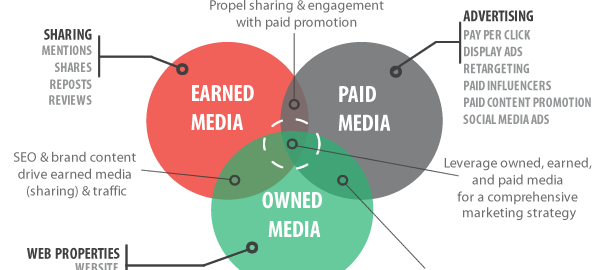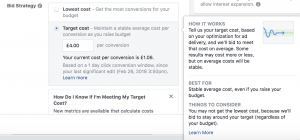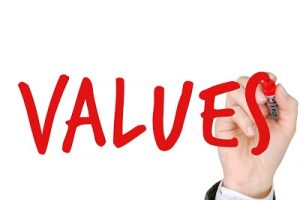— June 30, 2017
No matter if you are a marketer or a content creator – everyone who is concerned with the marketing world comes across the terms paid media, earned media, and owned media at some point. These terms are more than buzzwords of the digital age. Media values are important factors to have in mind when planning the allocation of your marketing budget.
Therefore, it is essential to define the distinct forms of media and knowledge of the effects of each element, as well as how they impact each other. This way, marketers can combine the three communication channels individually to fit them to the needs of their brand and create an effective marketing strategy.
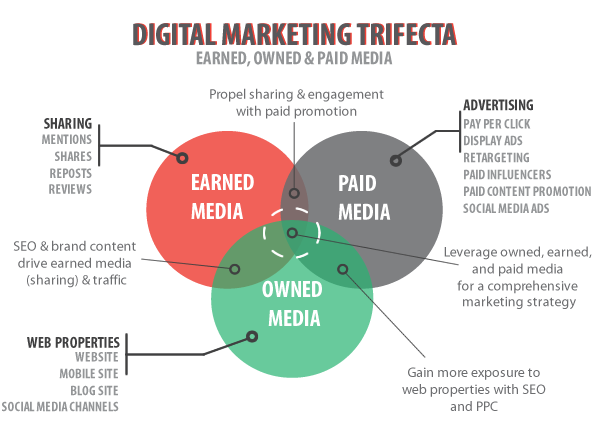
The digital marketing trifecta © Titan SEO
PAID MEDIA
Paid Media describes all marketing efforts that companies pay for. These include all forms of advertising, such as TV and print advertisements as well as digital forms like display ads, Pay Per Click (like search engine advertising), sponsored posts on social media and retargeting.
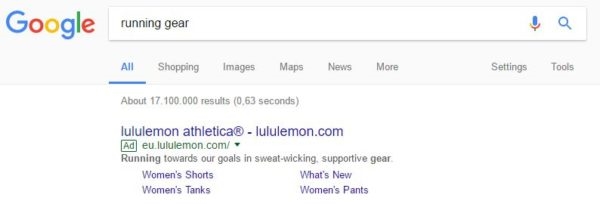
Example of Pay Per Click ad
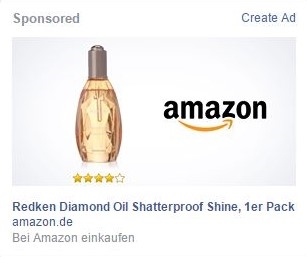
Example of retargeting on Facebook
Regarding influencer marketing, paid posts and campaigns also fall into the category of paid media. In contrast to these paid cooperations, all influencer efforts which are unpaid (influencer relations) can be considered as earned media.
OWNED MEDIA
Owned Media includes all channels owned by the company or brand, like their website and service pages, blog, social media channels: Facebook, Instagram, Twitter, LinkedIn, and the like.
Example of Instagram brand channel
On Instagram, for example, content on a brand’s channel created by the brand itself, is owned media. Content created by influencers which regards the brand or its products, on the other hand, is paid media if it is part of a paid cooperation or earned media if it is an unpaid mention.

Example of brand homepage
Owned media reflects your brand’s content strategy. It serves as a presentation of the brand’s image, transfers the brand’s message to potential customers and increases the overall brand awareness.
EARNED MEDIA
Earned Media refers to any communication around your brand, like mentions, shares, reposts, recommendations, and reviews, which is published by external sources, for example by brand advocates or customers. Earned media is unpaid and, thus, is a form of word-of-mouth.
For companies, being listed in press mentions or in customer reviews adds to their earned media. On social media, all posts in which your brand is mentioned or tagged increase your (organic) earned media value.
Example of Instagram post mentioning Rayban, H&M, and Zara
Earned Media might be the most valuable form of media values because the mentions increase your brand awareness without the necessity of spending money for it. Furthermore, a high earned media value expresses that people, both brand advocates and customers, talk about your brand because they like your products and feel connected to you.
Thus, this channel has a strong focus on relations towards your brand’s supporters and (potential) customers.
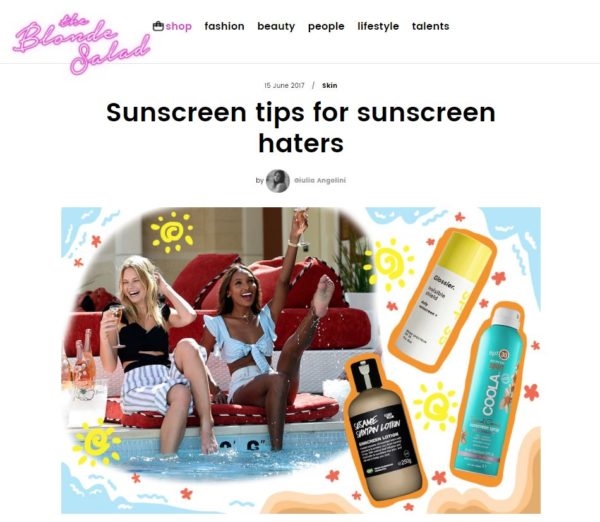
Example of product review @ The Blonde Salad
THE TAKEAWAY
All three channels offer their own individual benefits, but also present challenges for companies. Owned media, for example, is fully controllable, but also not as trusted as earned media forms. Earned media, on the other hand, is highly credible and authentic, but cannot be controlled by your brand.
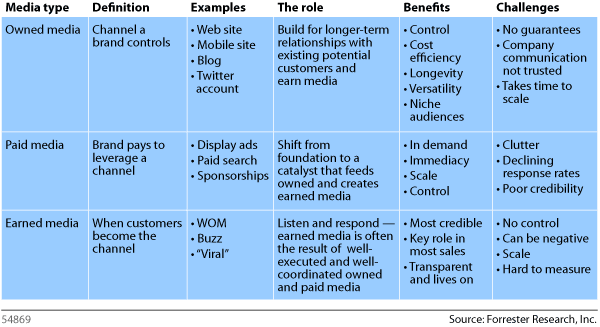
Media Types © Social Media Führerschein
Thus, every form has to be examined closely to determine which one works best for you, whether a combination of two or all three is beneficial and which one you should give more weight to regarding budget allocations.
_____________________________
Published originally on InfluencerDB | Influencer Marketing For Professionals
Digital & Social Articles on Business 2 Community
(209)
